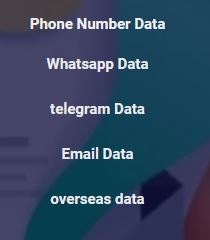However, although both concepts refer to that bounce, that is, when the messages do not reach the final recipient, soft bounce and hard bounce have certain characteristics that differentiate them from each other.
Understanding soft bounce and hard bounce more precisely helps you better understand the reasons why your email marketing campaign is not having the expected success or why your newsletter is not reaching your subscribers.
TABLE OF CONTENTS
Differences between soft bounce and hard bounce
A.- Soft bounce
B.- Hard bounce
Why does a soft bounce or hard bounce occur?
The importance of Sender mozambique email address Score to avoid soft bounce or hard bounce
Managing soft bounce and hard bounce
The dangers of bounce rate
How to reduce bounce rate
1.- Message frequency
2.- Unsubscribe
3.- Contact list
4.- Recognizable username
5.- Email extension
Differences between soft bounce and hard bounce
soft bounce vs hard bounce
Soft bounce and hard bounce are two different metrics, included in the bounce indicator. This indicates the number of emails that could not be delivered . Thus, depending on the cause of the bounce, it is a soft bounce or a hard bounce.

A.- Soft bounce
It is translated as soft bounce and occurs when there is a temporary problem . It can be a problem related to the email address. For example, when the recipient's inbox is full. It can also occur when the server is down.
In both cases, these are temporary problems that do not depend on the sender of the message . Furthermore, they are expected to be corrected within a short period of time. In no case do they last over time. Thus, when the problem is solved, the recipient will receive the messages.
When the recipient's server is back up and running, or when the inbox is cleared, the soft bounce messages will reach the user.
The sender of the message, or of the email marketing campaign, should not worry about this type of information.
Soft bounces and hard bounces are data that appear in the final reports of the campaigns . However, since these are specific errors, it is assumed that they will be resolved in a matter of time.
